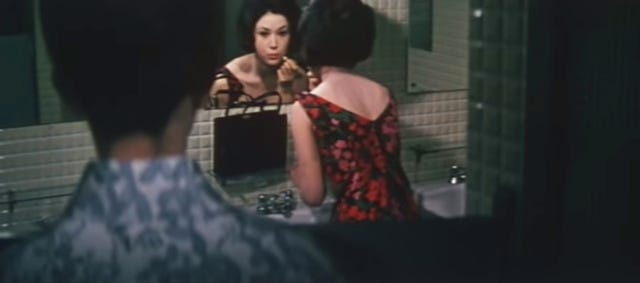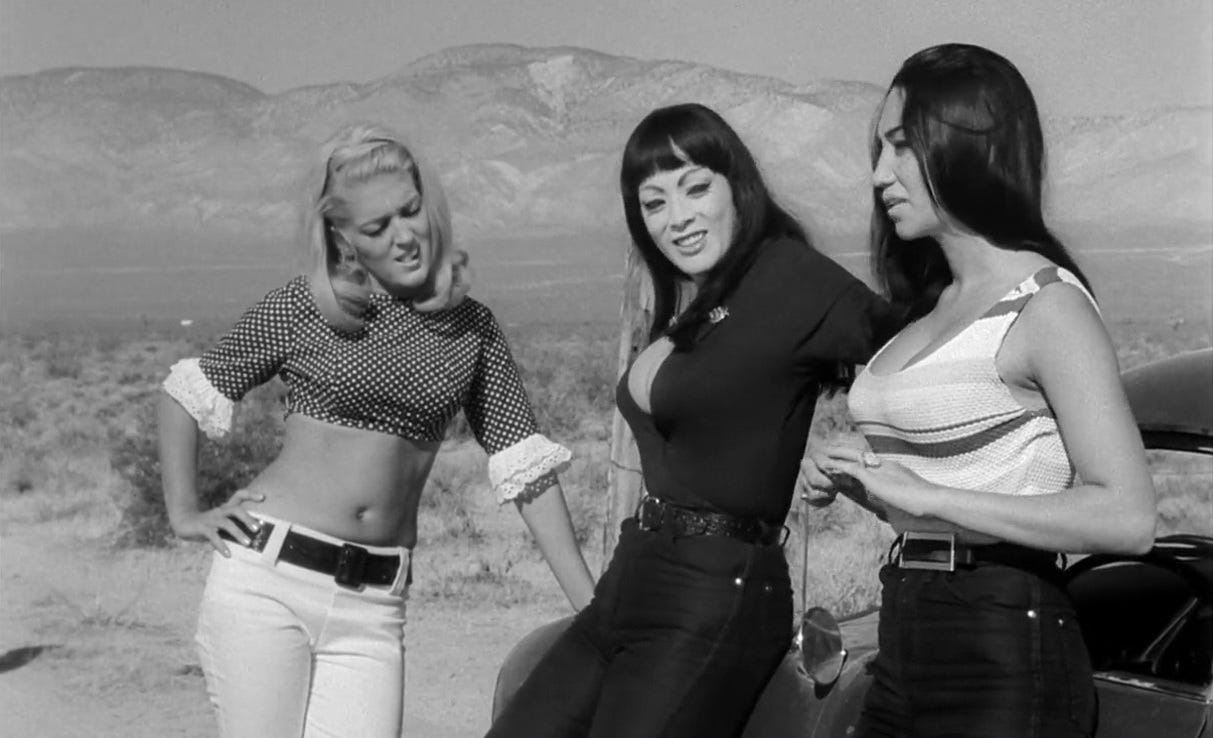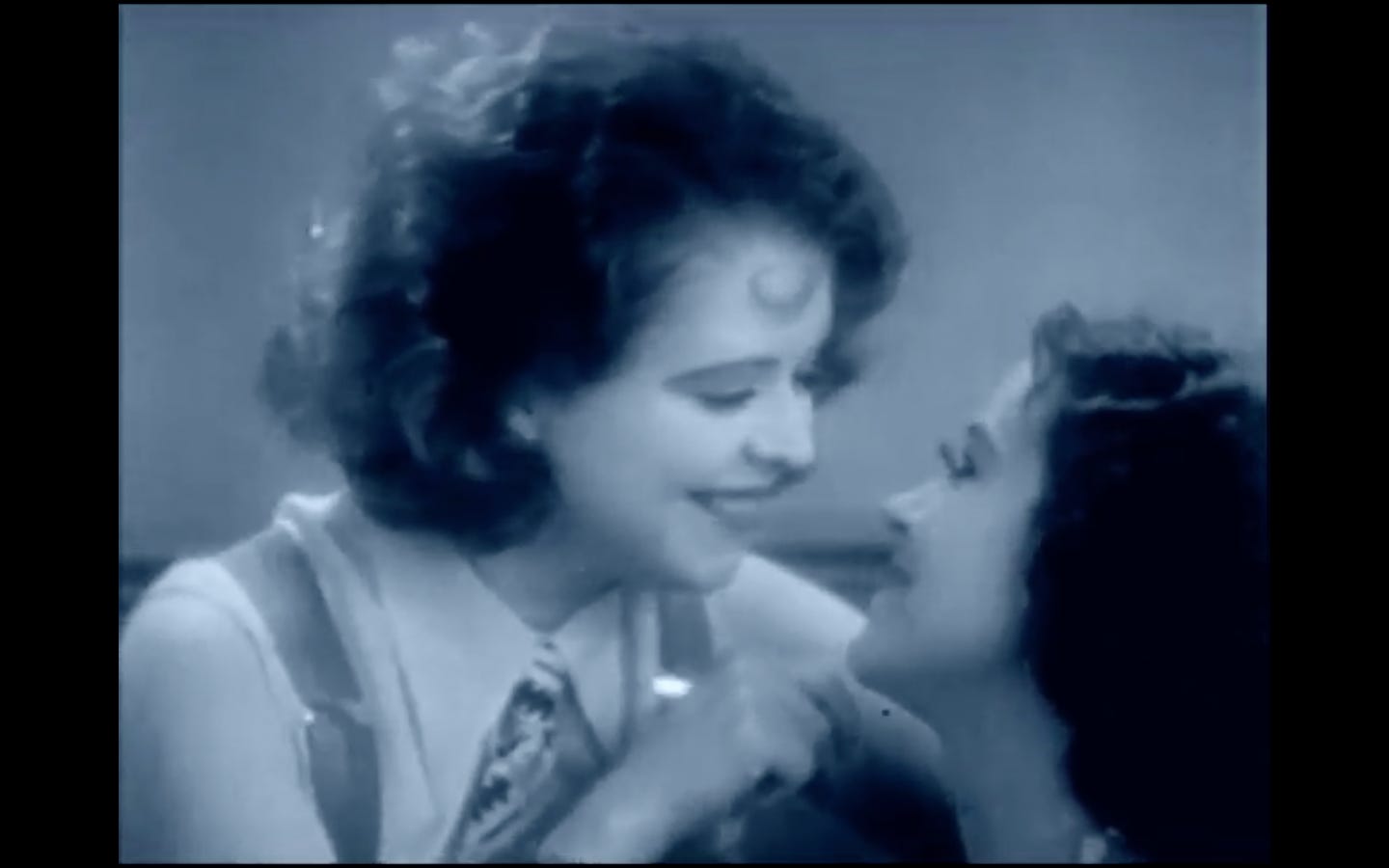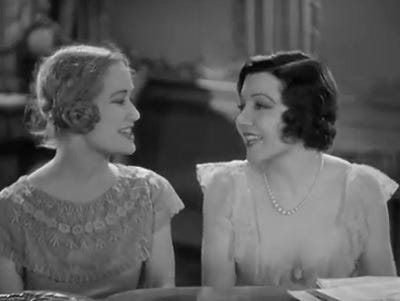A Parallel Journey Through Vintage Lesbian Cinema + More Recs (Guest Post by Celia)
Japanese film! Russ Meyer! Fassbinder! A garden of delights...
The final part of my lesbian-classic-film series: a guest essay by parallel cinema adventurer Celia! She’s a cool internet user with great taste (which will soon become apparent). You can read her blog (in Spanish) at suchadarkhour or follow her on Letterboxd here.
I have been avidly consuming lesbian-related media since I first realized I was attracted to women. Some of it came to me, like my mother telling me to read The Color Purple by Alice Walker, some of it I was able to detect with my developing gaydar. But when I had to look for lesbian film recommendations, though, every list had a series of biases that for years cut me off to some of the most influential films in gay cinema (can you believe that, after a decade of watching everything and anything with lesbians in it, I didn’t see Mädchen in Uniform (1931) until last year?).
The first problem I identify now is the lack of old films (or indie films, or third world films). This comes with a complete disregard for anything not easily digestible, for anything that requires some research to find, and to understand, that differs from your previous film experiences (modern Hollywood filmmaking is one very specific type of filmmaking, and not “neutral” or “normal”).
Second and tangentially related is the dislike for anything subtle. Somehow seeing a couple women look into each other’s eyes or hold hands for a second too long, even in a movie that has nothing to do with lesbianism, can feel much more emotionally resonant than any Happiest Season (2020). Maybe because a lot of my own experience of lesbian desire is also read between the lines — whole afternoons of lingering gazes and struggling to get the courage to get even one centimeter closer have often felt more meaningful than many “real” sexual experiences too. Certainly, these headaches over “what really counts” as a lesbian movie, as a relationship, or as sex are not so different from each other.
The third bias, that I keep seeing in every context imaginable, is the ‘male gaze’ discourse and similar ones. No, contrary to popular belief, Laura Mulvey did not want to bring back the Hays Code! Lesbian content seems to be more closely scrutinized and politicized than any other, and aside from having to be “good representation” it also has to be feminist and devoid of the problematic clichés like dramas or age gaps, making what you can portray more and more narrow. What annoys me the most is this idea that lesbians and bisexual women do not enjoy eroticism, or that there is no way to show eroticism on film in a non sexist way. Moreover, it is also important to be able to enjoy works that don’t agree with your politics, and even to turn the analysis of what you dislike into a part of the enjoyment.
Here are some pre-1979 lesbian films that I love and almost never see recommended, and then some more:
Manji (1964)
A bored housewife starts a forbidden relationship with a younger, beautiful woman, and the plot gets really weird from there. The acting (the main character almost faints and cries after seeing her naked lover for the first time), the amazing technicolor, the beautiful piano soundtrack and the treatment of fashion are reminiscent of Sirk, but Masumura takes the melodrama to a whole new level that would be almost ridiculous if it wasn’t so beautiful. Despite my constant research, I hadn’t even heard about this 1960s Japanese film until this year, and it became an instant favorite.
Faster, Pussycat! Kill! Kill! (1965)
Yes, this is technically a softcore/exploitation film, but 1960s softcore is just women with low necklines doing stuff, and here that stuff includes robbing, killing, drag racing, getting into drunk fights with each other and with random men, and kidnapping beautiful young girls. Beyond the interactions of the all-female gang with each other and with the girl they abducted, which are obviously meant to be titillating to the audience, there is also a scene which my sister and I, kind of in disbelief, could not but interpret as a bitter love confession between two female characters. It is, aside from all of that, one of the most fun movies I have ever seen, and anyone would instantly fall in love with Tura Satana.
The Bitter Tears of Petra Von Kant (1971)
Fassbinder, also inspired by Sirk and women’s films, made this character study, with a title inspired by Capra, in 1971. The entire film takes place inside the lavish apartment of Petra Von Kant, an emotionally stunted fashion designer who becomes obsessive and controlling of the women in her life; particularly, of her maid and the younger model she is in a relationship with. It is an extremely resonant portrayal of romantic and sexual obsession, the famous lesbian loneliness and the repression of desire. Needless to say, it is also visually gorgeous.
Not really lesbian films, but…
The Wild Party (1929) dir. Dorothy Arzner
Clara Bow, in one of her first sound roles, studies in a woman’s university and the camera, with an unmistakably ‘female gaze’, lingers on the ambiance of the dorms: some of the students are doing their hair, some are exercising, some are lying down in the sofas and cracking jokes. Here relationships between women are portrayed as both deeper and more important than heterosexual ones, and as a necessity to survive in a hostile world. While I would not classify this necessarily as a “lesbian film” (it is in my heart) it is still worth watching if you want to become familiar with the filmography of Dorothy Arzner, the only female (and lesbian) director of Golden Era Hollywood.
The Smiling Lieutenant (1931)
Two women (Claudette Colbert and Miriam Hopkins), who have been fighting over a man for the whole movie, finally meet in person and instantly become friends, hugging, kissing and singing a song about lingerie. One of the joys of watching old movies is finding moments like these completely by chance. I may be reading too much into this one but I do not care!
Night Nurse (1931)
Barbara Stanwyck (probably bisexual) and Joan Blondell are student nurses and together they get into trouble, flirt, watch and help each other dress and undress, and jump into bed together. Some mafia plot with Clark Gable is stuck with glue at the end. Again, not really gay, but worth it for the gazes and the touches and for Stanwyck, whom I love.











